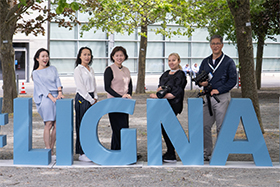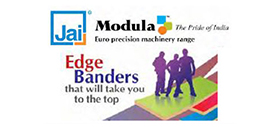Rolls-Royce icon: ‘most intricate woodwork ever’
Rolls-Royce Phantom’s 100th anniversary Private Collection will reset the bar for rare and precious materials in the hands of master craftsmen

The designer employed 3-D marquetry to introduce raised motifs, embellished with laser engraving and 3-D ink layering, on top of the main wood surface.
Rolls-Royce, the well-known British luxury automobile manufacturer, is celebrating the 100th anniversary of its iconic Phantom limousine with interiors that blends “our most intricate woodwork ever” with laser etching, 3-D marquetry, ink layering, and 24-carat gold leaf artistry.
Artisans from the home of Rolls-Royce at Goodwood (West Sussex, England) undertook special training as part of a year-long development process to create an interior reserved for an exclusive Rolls-Royce Private Collection, to be revealed to celebrate the Phantom’s centenary.
The Phantom made its debut in 1925 as a low volume, hand-built limousine, which in its first four generations was custom coach-built to the customer’s requests, and sometimes extravagant desires.
The Phantom has defined the pinnacle of luxury for 100 years across continents and set the bar of what can be achieved when the rarest and most precious materials are placed in the hands of master craftspeople.
To create a textured wood sculpture that “captures places, moments and journeys” that have shaped over the Phantom’s lifespan, each composition is crafted in Blackwood veneer. The scenes are first sketched by hand, then translated into digital form and recreated in wood.
Etching journeys
These innovations give the woodwork an intricacy and richness that hint at the extraordinary methods and technologies behind their creation, according to Phil Fabre de la Grange, Head of Bespoke, Rolls-Royce Motor Cars.
The interior door treatment created for the upcoming Private Collection is the most complex and detailed in Rolls-Royce history, with every journey etched into its surfaces. According to the company, it took a full year to develop these pieces alone, “pushing the medium of veneer to its sculptural limits”.
The artwork visually blends geographical maps, winding routes, sweeping landscapes, floral elements and depictions of experimental models into a single, stunning composition.
The creation of the door pieces is achieved by individually crafting sections of the overall composition and then assembling them like an intricate mosaic. Rendered in Blackwood, selected for its unique grain pattern, the design uses textures, contrasts and reflectivity to celebrate the material, creating a rich visual effect with a monochromatic palette.
Oversized veneer sheets were specially commissioned for this project to accommodate the generous size of Phantom’s doors. Based on the natural grain pattern of the piece, each of the large veneer leaves is assigned to a specific section of the composition. The designer focused on how the grain catches the light at different angles, ensuring that new details and textures are revealed at every glance.
To ensure nothing detracts from the overall composition, Phantom’s metal speaker grilles are replaced by small openings milled directly into the wood. The expansive panel is then stained to ensure absolute colour uniformity.
Laser etching
The design motifs (maps, landscapes, flowers and trees) are etched onto the wood at three different depths using a laser, each line of light and shadow carrying echoes of Phantom’s century of stories. Areas more deeply etched into the wood appear to be darker, providing a contrast to the more reflective surface of the unetched veneer.
This produces subtle shifts in colour and light, adding a sense of movement and texture beyond the linework.
The marque’s artisans also developed a 3-D ink layering technology to add fine textures and intricate patterns directly onto the surface of the wood, building the Phantom’s narrative in gradual strokes. Built from individual layers, these embellishments achieve an extraordinary level of precision and clarity.
To add texture to the artwork, the designer employed 3-D marquetry to introduce raised motifs, embellished with engraving and 3-D ink layering, on top of the
main wood surface. This 3-D approach adds depth, detail and a sense of tactile intrigue, inviting occupants to explore the motor car’s surfaces and textures with their hands.

Artisans used 24-carat gold leaves (L) to depict roads on the map section. The ‘road’ (R) is precision-cut and inlaid within the marquetry composition.
‘Roads’ in gold
The manufacturer says the Phantom’s unique woodwork introduces another Rolls-Royce first: gilding, also known as gold leafing, transforming the Phantom’s most significant journeys into luminous threads of history.
Drawing on centuries-old cabinet-making traditions, this process was adapted and perfected by Rolls-Royce to meet the marque’s extreme temperature and humidity testing parameters. This remarkable wood treatment represents a completely new form of wood sculpting and a significant evolution of contemporary craft.
Once the wood sections were completed, artisans used 24-carat gold leaves to depict roads on the map section – each one a gold thread in the Phantom’s story.
Squares of gold leaf, typically just 0.1 micro-metres thick, are hand-laid and sealed with a protective coating that achieves a hard-wearing, high-gloss finish. The “road” is precision-cut and inlaid within the marquetry composition.
While it pushes the material to its limit, the results speak for themselves. Given Rolls-Royce has teased an “exclusive collection”, there might be more to come with the special Phantom!
Comments

- European symposium highlights formaldehyde emission limits
- Egger adopts holistic approach to waste management
- Taiwan’s Woodworking Machinery Industry Captivates Global Media on Opening Day of LIGNA 2025
- Coming of age of sustainability
- Intelligent packing line, sander from Woodtech
- Ornare introduces 5 new leather decors
- Richfill Edge Coat offers safer plywood finishing
- Jai’s Optimus range stays ahead of the curve
- Merino’s Acrolam sets new benchmarks in elegance
- Pytha 3D-CAD: where precision meets production
- Raucarp edge bands: simple, affordable
- Greenlam scores a 1st: High Quality Product Award
- Häfele turns space solutions provider
- Hettich bets on intelligent motion for evolving interiors
- Praveedh taking desi innovation to the global stage
- Turakhia shows off its Natural Veneers range
- Egger continues to ‘inspire, create, grow’
- Blum turns heads with new drawer, hinge systems
- FSC benchmarking responsible forestry
- At 100, Festool powers new solutions
- Door manufacturing on cusp of transformation
- AI-powered crib sings a universal lullaby
- In Full Bloom: Top brass at Blum takes a shot at burgeoning India market
- Elegant mathematics is bending the future of design
- Wood fibres weave new textile yarn
- Rolls-Royce icon: ‘most intricate woodwork ever’
- Felder’s long-term view to achieving excellence
- Tech in the future of furniture manufacturing
- Exports from India on horizon: Juergen Koeppel, CEO, Leitz Tooling
- Pfleiderer adds value with digital ‘structure finder’
- Australian architects design for KEEPsakes
- Jump shot! Crafting the ultimate pool table
- Apple adopts CLT to cut building emissions
- Sustainable design at Hotel Hábitat 2025
- Vecoplan tailors waste wood processing at Schaffer Holz
- Dealer engagement goes digital
- How to refinish wood decks like a pro
- IWMMTA makes strong beginning in the East
- Feria Hábitat weathers unusual Spanish storm
- Interzum Guangzhou 2026: materials defining the future
- Forum Italy: Beyond Furniture, Towards the Future
- CIFF Shanghai: hub of design, innovation
- Interzum Jakarta debuts with strong connect
- DAIC to showcase Kerala’s prowess this December
- Events Calendar: Industry fairs to visit


































